BACK TO STORIES
Great Lakes African American Quilters’ Network 2023 Quilt Documentation Day
Livonia; Michigan; United States
The 2023 Great Lakes African American Quilters’ Network (GLAAQN) Quilt Documentation Day took place at the Livonia Civic Park Senior Center on Saturday, October 14th, 2023. This was the first collaborative quilt documentation day of its kind between the GLAAQN and the Quilt Index’s Black Diaspora Quilt History Project. The event was open to all GLAAQN members who desired to document, photograph, and share information about quilts they have made or collected over time. Each quiltmaker was invited to bring up to 5 quilts to be documented and photographed at the event. Quiltmakers were also invited to have professional artist portraits taken during the event.
The event was run by GLAAQN volunteers, with the assistance of Dr. Liv Furman and Dr. Marsha MacDowell. Volunteers attended a virtual training session with Dr. Furman on Zoom prior to the event to unpack Quilt Documentation Day logistics and concerns. Mark Harris served as the photographer for the event.
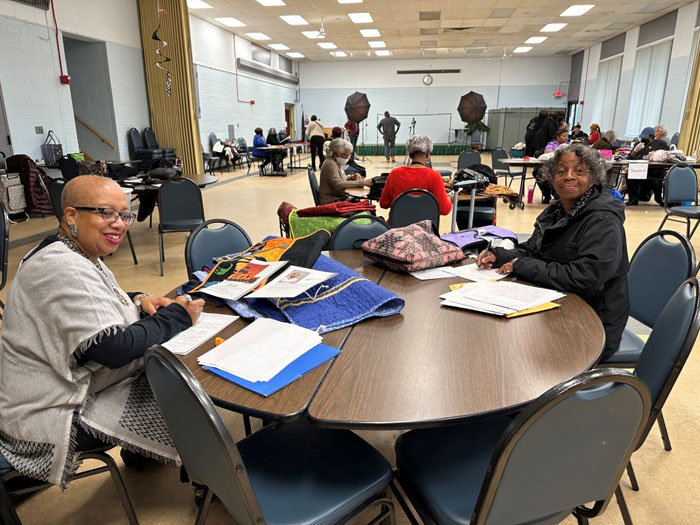
Left: Cassandra R. Johnson Harris. Right: Linda Thomas. Photographer: Liv Furman.)
Altogether, 82 quilts by 20 different artists were documented at the event. Following the event, Quilt Index Associate Director, Beth Donaldson, added the data and made Quilt Pages and Artist Pages for all artists who desired to share their stories on the QI website.
• • The landing page for GLAAQN artists on the Quilt Index website can be found here: https://quiltindex.org//view/?type=docprojects&kid=62-185-11
• • The individual quilts documented during the 2023 GLAAQN Quilt Documentation Day event can be found here: https://quiltindex.org/results/?keywords=%22GLAAQN%20October%202023%20meeting%2C%20Livonia%2C%20Michigan%22&search=quilts&
• • Many of these quilt makers and their quilts are also listed on the Black Diaspora Quilt History Project (BDQHP) collections page: https://quiltindex.org//view/?type=docprojects&kid=62-185-1
• • For more information about the Great Lakes African American Quilters’ Network, check out the GLAAQN Website: https://www.glaaqn.com/
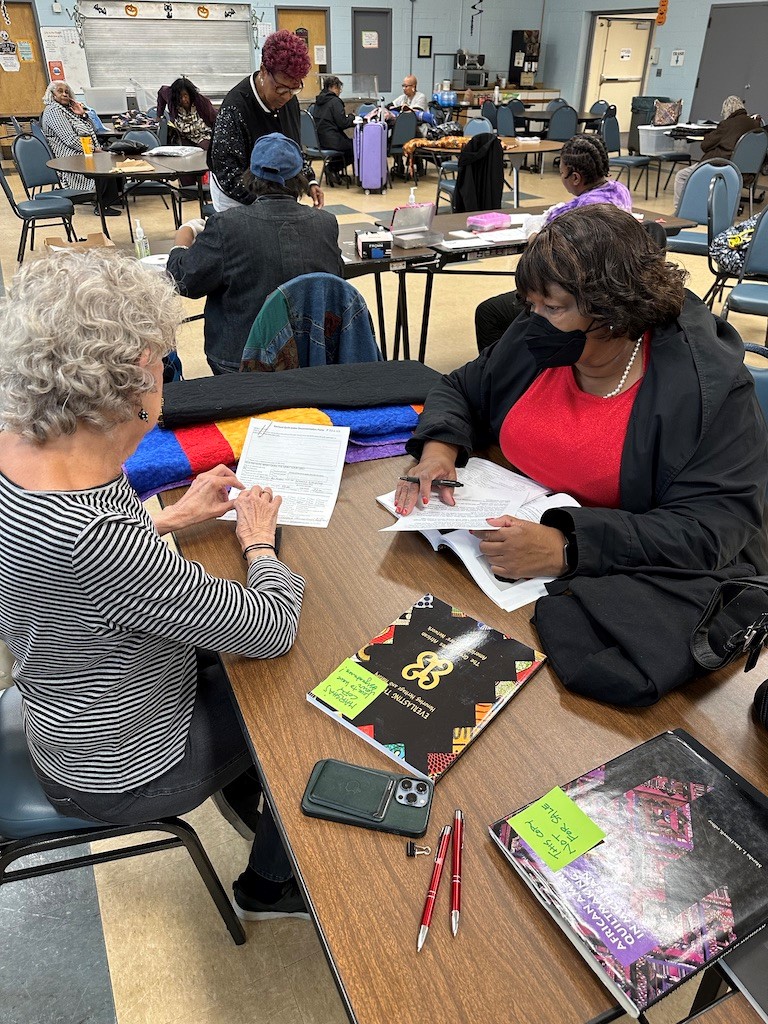
Left: Marsha MacDowell, Right: Patricia Ann Felder
[A] major source of data about quilt history comes from regional grassroots quilt documentation projects that began in the mid-1980s. They were initiated and led primarily by quilt scholars or members of state and regional quilt guilds who wanted to make sure that information about this art form, one created primarily by women, was recorded. These projects were geographically circumscribed by county, state or province, or country; some were conducted over a set period of time and have been concluded, others are ongoing, and new ones are regularly initiated. A basic format involves project leaders encouraging makers and owners to bring their quilts into central community locations (museums, libraries, senior centers, etc.) on “Quilt Days.” Volunteers measure and photograph the quilts; describe physical features; and collect biographical information on the quiltmaker and social history of the quilt, including its production, ownership, purpose, function, and any affiliated stories. The collected information is recorded on standardized survey or inventory forms and sometimes the stories about the quilt and its maker are audio or video recorded. Shelly Zegart, one of the founders of the Kentucky Quilt Project, observes that these projects collectively form “the largest grassroots movement in the decorative arts in the last half of the 20th century. More than 200,000 quilts have been documented at more than 2,000 ‘Quilt Days’ and additional projects are starting every year” (Zegart n.d.). Notably, very few of these documentation projects made special efforts to document quilts made by artists of non-white* descent. 1*“White” is used here to clarify that the stories and images of BIPOC quilts were rarely documented.
Implications & Significance
The 2023 GLAAQN Quilt Documentation Day centered and celebrated the lives of Black women, particularly Black women elders, their living relatives, and their late ancestors. The quilts varied in style, texture, and construction. The backgrounds of the artists were as varied as the quilts themselves. For example, Ernestine Bains brought in 2 quilts that were gifts from her great grandmother, Bertha Tillman Ambrose Dunlap, respectively named Grandma’s Colors and Green, Yellow, and Red Lone Star. The decades-old quilts contained still vibrant reds, yellows, blues, and greens, in intricate and often repeating patterns. Another quiltmaker, Frances Jackson brought in multiple beautiful quilts, including her incredibly crafted, New York Beauty. Quiltmaker Toya R. B. Thomas documented many standout quilts as well, including her All That I Am quilt that featured portraiture, beading, and interdisciplinary textile printing techniques which demonstrate her complex and artful storytelling skill. Altogether, this event was a substantial documentation of knowledge regarding Black (women) textile artists in this region and their quilts.

Grandma's Colors
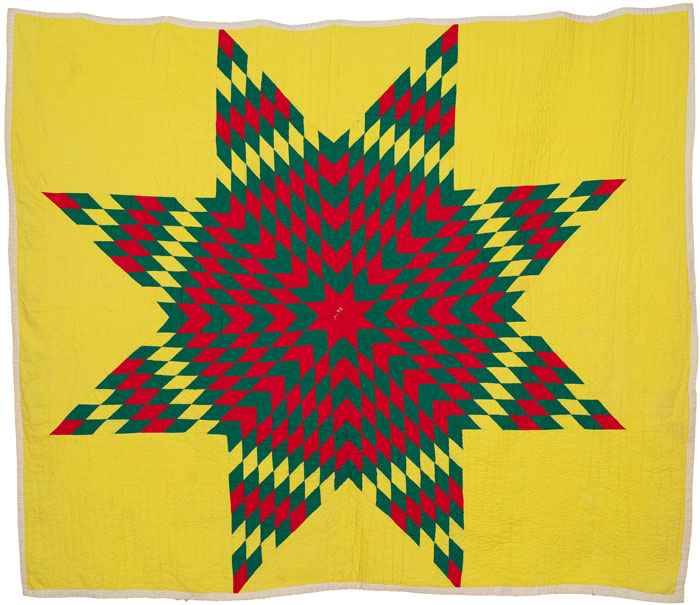
Green, Yellow, and Red Lone Star
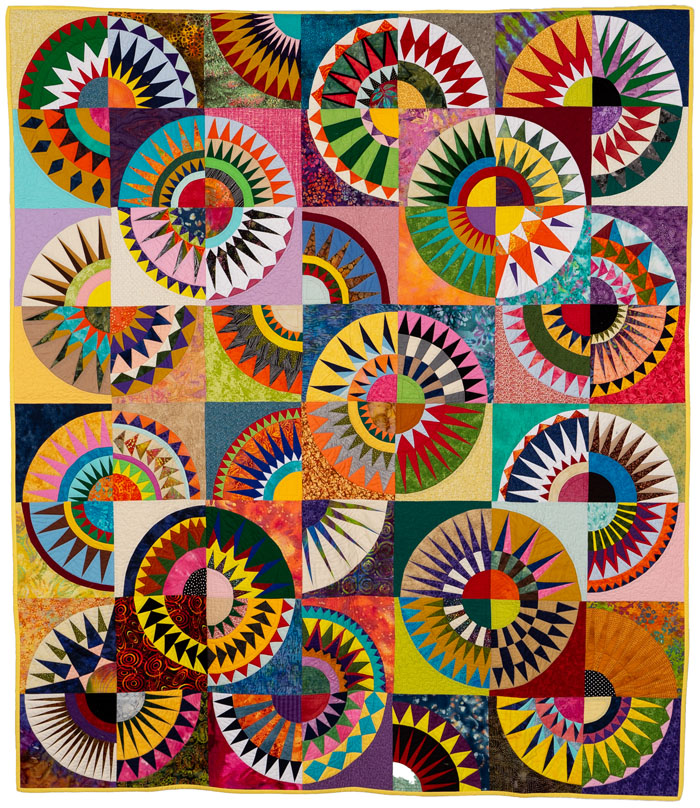
New York Beauty
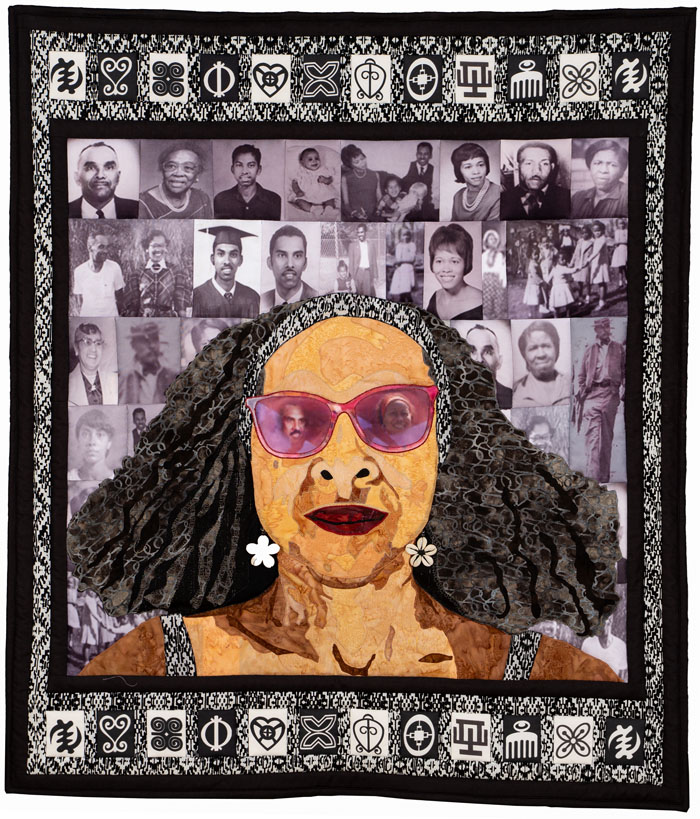
All That I Am
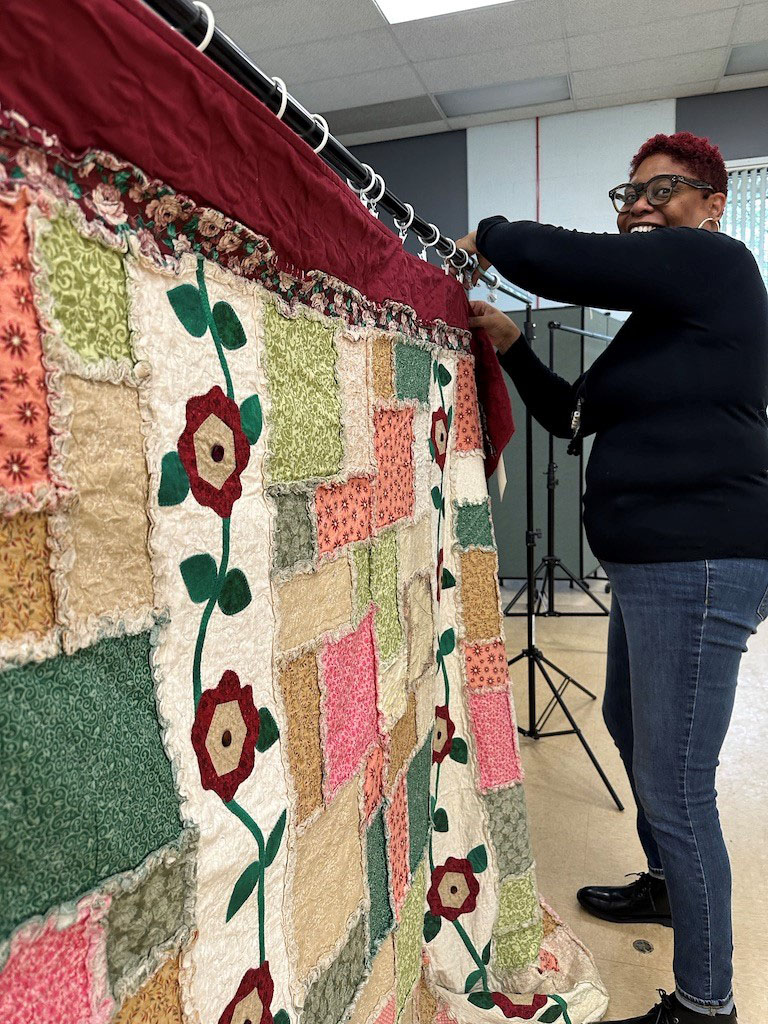
Pictured: Pjay Alexander hanging the Celebrating Thirty Years quilt at the event.
The impact of this quilt documentation day was expanded through the utilization of digital mediums. All interested quilt artists were able to have artist pages and/or quilt pages created and added to the Quilt Index website. Some quilt artists also shared their quilt documentation on their own personal/guild websites and social media pages. Overall, the quilt documentation day resulted in the production of valuable digital humanities artifacts that document the identities, lives, and material legacies of Black quilt artists in the region.
While quilt documentation days have ample benefits, it is also important to consider spaces of tension and ways to safeguard the stories and life work of the quiltmakers involved. Before hosting a quilt documentation day in your community, be sure to determine what will happen with any physical or digital documentation after the event. Consider questions such as: How will the images and information be stored, preserved, and shared in the next 1-5 years? How will the images and information be stored, preserved, and shared after 5 years have passed? Who will help steward this documentation? What safeguards are in place to protect the quiltmakers, their stories, and their artwork? If the images and documentation will be shared digitally (i.e. website, social media pages, presentations, etc.), consider what safeguards will need to be in place to prevent images and narratives from being stolen, misused, or used without the owner's consent.
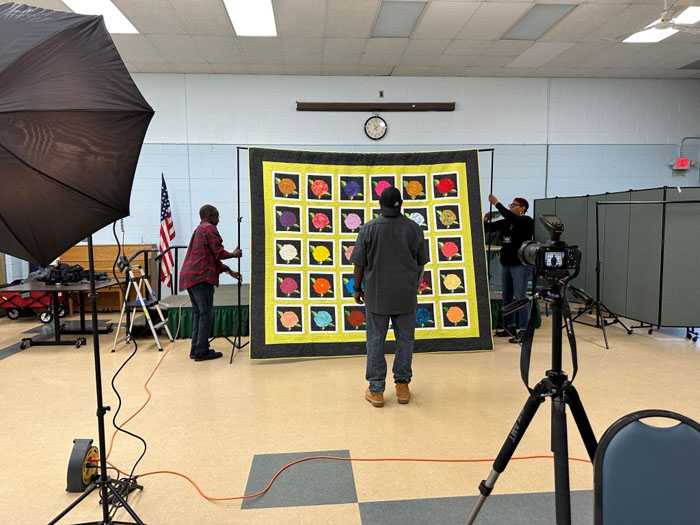
Center: photographer Mark Harris assessing the Rose Garden quilt.
The Quilt Index Documentation Days Guide
The Quilt Index Guide to Documenting Quilts
The Quilt Index Form
Preparing Your Images for the Quilt Index
You can add your own quilt without attending a documentation day on the Submit A Quilt page.
1MacDowell, Marsha, and Furman, Liv. (2023). "The Black Diaspora Quilt History Project: A Resource for Inclusive Preservation, Research, and Teaching". Journal of Folklore and Education. 10(1), 36-45. https://jfepublications.org/article/the-black-diaspora-quilt-history-project
Written by Dr. Liv Furman (2023)
Great Lakes African American Quilters' Netwok
-
Great Lakes African American Quilters Network Documentation Project; Guild
Black Diaspora Quilt History Project; Michigan Quilt Project
-
Black Diaspora Quilt History Project Documentation Project
-
Bains, Ernestine Owner
Great Lakes African American Quilters Network
-
Dunlap, Bertha Tillman Ambrose Quiltmaker
Great Lakes African American Quilters Network
-
Felder, Patricia Ann Owner; Quiltmaker
Great Lakes African American Quilters Network
-
Furman, Liv Quiltmaker
Black Diaspora Quilt History Project
-
Harris, Cassandra R. Johnson Owner; Quiltmaker
Great Lakes African American Quilters Network
-
Jackson, Frances Owner; Quiltmaker
Great Lakes African American Quilters Network
-
MacDowell, Marsha Author; Interviewer; Owner; Quiltmaker
Michigan State University Museum
-
Thomas, Linda Owner; Quiltmaker
Great Lakes African American Quilters Network
-
Thomas, Toya R.B. Quiltmaker
Great Lakes African American Quilters Network
-
July 30, 2022
All That I Am Thomas, Toya
-
March 2007
Celebrating Thirt... White, Frances
-
1950-1975
Grandma's Colors Dunlap, Bertha
-
1950-1975
Green, Yellow, an... Dunlap, Bertha
-
February 2022
New York Beauty Jackson, Frances
-
2020
Rose Garden Jackson, Frances
Load More